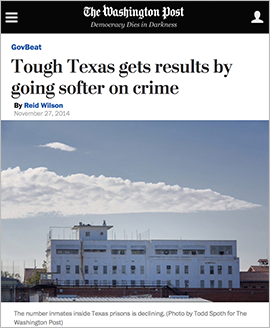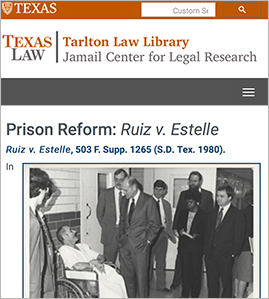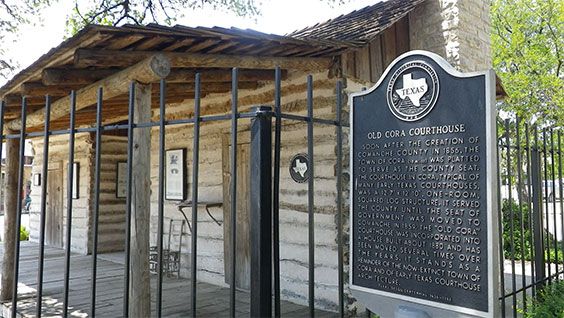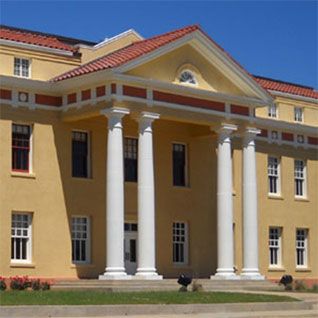Understanding the Lone Star State’s Criminal Justice System
Texas’s Criminal Justice system is responsible for providing public safety by deterring and preventing crime, punishing offenders, and reintroducing those who have served their time back into the community. The criminal justice system is based on the body of laws that define crimes and offenses, and specify what punishments are appropriate for those crimes.
There are two types of crimes that are defined by Texas State law: felonies, misdemeanors, and infractions.
- Felonies are usually the most serious crime. An individual that is convicted of a felony may face jail time, though that time may be spent in either a county jail, or a state prison. Felonies cover crimes that are considered both serious, and/or violent. Commonly known felonies include murder, robbery, rape, burglary of a residence, and assault. Felony punishments vary in harshness depending on the nature of the crime, discretion of the court, and the offender’s criminal history.
- A misdemeanor is typically a less serious crime, and common punishments include probation, county jail time, fines, or a combination of all three. Common misdemeanors include assault, theft, and public drunkenness.
- An infraction is the least serious crime and is nearly always punished with a fine. Nearly all infractions are crimes committed while operating a motor vehicle, and include speeding, and inappropriate parking.

Texas political culture favors a swift and stern punishment for offenses against the law, especially in the areas of violent crime. As of August 2000, according to the Bureau of Justice Statistics, Texas lead the nation in imprisoning its citizens with the largest incarcerated population under the jurisdiction of its prison system.
Texas has been the top state for state prison growth, with a rate of nearly 12% compared to the nation’s average of 6%. Nearly one in five new prisoners added to the nation’s prisons was in Texas, and one fourth of the nations parole and probationers are in Texas.
At the end of 1999, 706,600 Texans were in prison, jail or on probation, which accounts for roughly 5% of the adult population in the state. To put this in context, There are more Texans under the criminal justice system than the entire population of Vermont, Wyoming or Alaska individually.
Texas’s Criminal Justice System has three components. Those three stages consist of law enforcement and criminal prosecution, trial and appeals, and corrections. Each of these stages is comprised of multiple levels, organizations and many thousands of personnel.
- The first, and most decentralized of the stages is that of law enforcement and prosecution. It includes the sheriffs departments that patrol the state’s 254 counties, and the police departments that enforce laws in Texas’s 1,202 municipalities. It also accounts for highway patrolman agencies that enforce laws on the state’s roadways.
- The court system is complex and decentralized at lower levels, but nonetheless are comprehensively regulated by the Texas Supreme Court. This means that they operate within a well-defined court hierarchy, despite their different approaches to criminal justice.
- The corrections system in Texas is sprawling and multi-layered, but arguably the most tightly organized of these stages. There are numerous municipal and county jail systems, but offenders that incur substantial jail time are often regulated to state jails and prisons.
Texas Law Enforcement Agencies all operate under an umbrella authority known as the Texas Commission on Law Enforcement, or TCOLE. TCOLE includes sheriff's, deputies, constables, police officers, marshals, troopers, Texas Rangers, agents of the Alcoholic Beverage Commission, investigators of the Attorney General, game wardens, and correctional officers. TCOLE itself operates under the Texas Legislature, which grants it authority under Chapter 1701 or the Texas Occupations Code. TCOLE’s Board of Commissioners forms the administrative body of the organization, and has several duties, including making recommendations to the Governor of Texas and the state’s legislature. Its nine members are appointed by the Governor of Texas, and confirmed by the state Senate. Each of the nine members of the TCOLE Board of Commissioners serves six years, and must consist of three sheriffs, constables, or police chiefs, three members who have been TCOLE licensees for at least five years, and three members of the general population.
The idea for TCOLE started in 1965, and was imagined as a way to improve law enforcement proficiency and effectiveness. Since then several milestones have been achieved. By 1969, mandatory standards for the employment of law enforcement officers were rising in popularity. In 1970, the first iteration of the standards for the Basic Peace Officer Course (BPOC) was issued, and called for a 140-hour minimum curriculum. In 1971, the appointment of trained reserve officers was authorized, and in 1976, medical and psychological examinations were added as part of the licensure. Almost a decade later in 1983, continuing education became a mandatory standard of peace officer employment. In 2004, the BPOC standards we know today were implemented, which most notably called for a minimum of 618 hours of instruction for new officers to gain licensure.

The Texas court system includes, starting from the lowest levels, municipal courts with 1,559 Judges and 926 City jurisdictions, Justice Courts with 815 courts and judges, county-level courts with 508 courts and judges, 456 district court and judges, the 14 Texas Court of Appeals with 80 justices, and finally both the Texas Court of Appeals and the Texas Supreme Court, which both employee 9 judges or justices.
- The municipal courts and justice courts make up the local trial court level, and both have the most limited jurisdiction of the Texas courts. The municipal courts handle cases involving misdemeanors punishable by fines, maintain limited civil jurisdiction, orchestrate magistrate functions, and maintain exclusive original jurisdiction over municipal ordinance criminal cases. The Justice courts oversee cases involving civil actions of under $10,000 in claims, handle small claims court, oversee criminal misdemeanors punishable by fines, and orchestrate magistrate functions.
- The county level courts have much wider jurisdictions, responsibilities, and are made up of 254 Constitutional County Courts, 236 Statutory County Courts, and 18 Statutory Probate Courts. The Constitutional County Courts oversee civil actions in their jurisdiction that result in between $200 and $10,000 in fines, probate court, Juvenile matters, Appeals de novo from lower courts or on the record from municipal courts of record, and maintain exclusive jurisdiction over misdemeanors with fines greater than $500 or a jail sentence. The Statutory County Courts are responsible for officiating all civil, criminal, original and appellate actions prescribed by law for constitutional county courts, and maintain jurisdiction over civil matters involving holding of up to $200,000. Finally, the Statutory Probate Courts oversee probate matters.
- The District level courts are technically more powerful than the county level courts, yet county level courts do not appeal to them. Instead, both lower courts, and district level courts both appeal to the Texas court of appeals. The district level courts are responsible for providing judgement in cases involving civil action of over $200, divorces, land titles, and contested elections. They are also responsible for felony criminal matters and juvenile matters. Of the 456 courts, 359 contain one county, 97 contain two counties, and 13 courts are designated criminal district courts.
- At the State Intermediate Appellate level, the Court of Appeals supplies judgment for intermediate appeals from trial courts. For criminal appeals, cases are escalated to the Court of Criminal Appeals, while civil cases are appealed to the Texas Supreme Court. Both upper courts are the highest in Texas, and provide final jurisdiction in their respective areas of law.
The Texas justice system precedes its own statehood, with municipal alcaldes holding judicial power until the 1836 revolution. After 1836, the newly independent government established a judicial system based on Anglo-American common law. In this system, the newly founded Texas Supreme Court would be the highest court in the land. In 1840, the Texas Supreme Court held its first term. In 1845, along with it’s induction into the United States, the Texas Supreme Court was restructured from its previous eight judges down to just two associate judges and one chief justice. In 1850, a constitutional amendment makes the offices of the Supreme Court elected, and between 1867-69, Texas came under U.S. military command following the Texas Civil War. The serving justices were called impediments to reconstruction, and replaced by the victorious United States. In 1876, to relieve the Texas Supreme Court of it’s then heavy caseload, a three judge Court of Appeals was established, but in 1891, the judicial system was completely reconstructed after it had failed to provide the relief the Supreme Court needed. The newly constructed judicial system began in 1892. Then in 1918, Texas Legislature once again established The Commision of Appeals to help with the Supreme Court’s docket. It wouldn't be until 1945 that Texas legislation would reinstall an eight judge supreme court headed by a chief justice. Further changes and additions would be made up until 1980, with most additional courts serving to reduce supreme court workloads.


